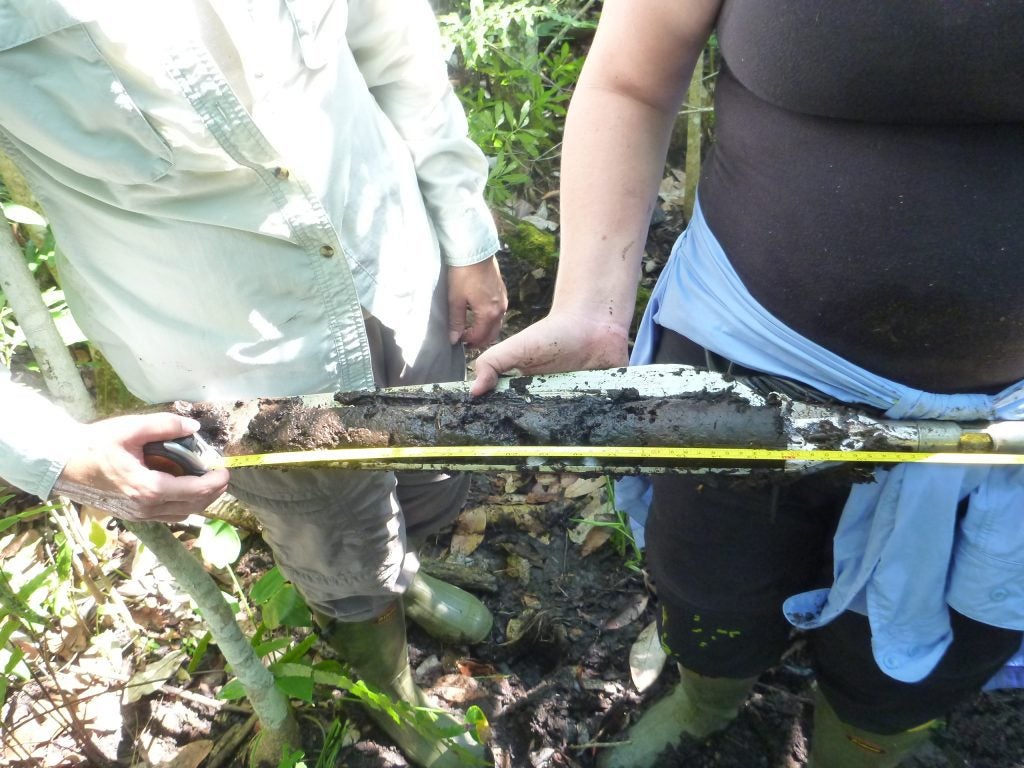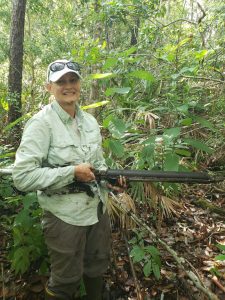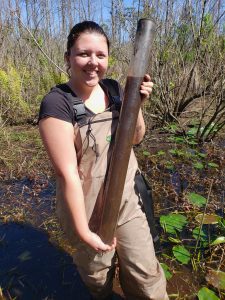Underground Carbon Deposits Unlock Climate Change Insights

The amount of carbon stored in soils across UCF’s campus is equivalent to removing 68,200 cars from the roads for a year. That’s according to newly published research from Aquatic Biogeochemistry Lab Supervisor and Associate Professor of Biology, Lisa Chambers, Ph.D., and Jennifer Bennett ’20.
The research is the product of intensive soil sampling across the university’s arboretum and natural lands, followed by laboratory analysis of those soils for physicochemical properties and soil carbon content. Findings confirmed Chambers’ and Bennett’s hypothesis: Wetlands store about 16 times more carbon than uplands. They estimate that there are areas of campus that have been wet for at least 5,000 years based on how much soil carbon is there.
The research findings highlight the important role that green space serves in urban areas. For instance, a landscape designated as “urban” is typically assigned an ecosystem value of nothing, Chambers says. But in reality, urban wetlands and patches of greenery serve an important function as a carbon sink, helping to off-set the fossil fuel consumption often occurring directly adjacent to them.

While soil carbon reservoirs naturally exist, Chambers and Bennett hope to show how they help avoid releasing carbon back into the atmosphere. Leveraging them can help alleviate some of the problems created by increasing carbon emissions.
“Soil’s not just dirt under our feet,” Chambers explains. “The soil and organisms that live there make everything else on earth work. It’s a part of our ecosystem that serves vital functions.”
Additionally, the research provides easily discernible landscape features that can identify areas where a lot of carbon is stored.
“It helps people who manage natural areas and make infrastructure decisions,” explains Chambers. “If they’re aware of the broader global function that green spaces provide, they can help minimize the impact to carbon reservoirs.”

Chambers plans to use the information from this research project as she continues future work which will examine vegetated coastal ecosystems, including mangroves, marshes, and seagrass beds. An internal seed grant from the College of Sciences will be used to do a “blue carbon” inventory at UCF’s Econfina River Field Research Station in the state’s Big Bend region. This will not only help determine the amount of carbon there, but also provide insight into how coastal systems store carbon and the properties of the soil that keep it stored longer.
“Identifying and protecting natural ‘hot spots’ of soil carbon is an easy way to help mitigate climate change,” said Chambers.
